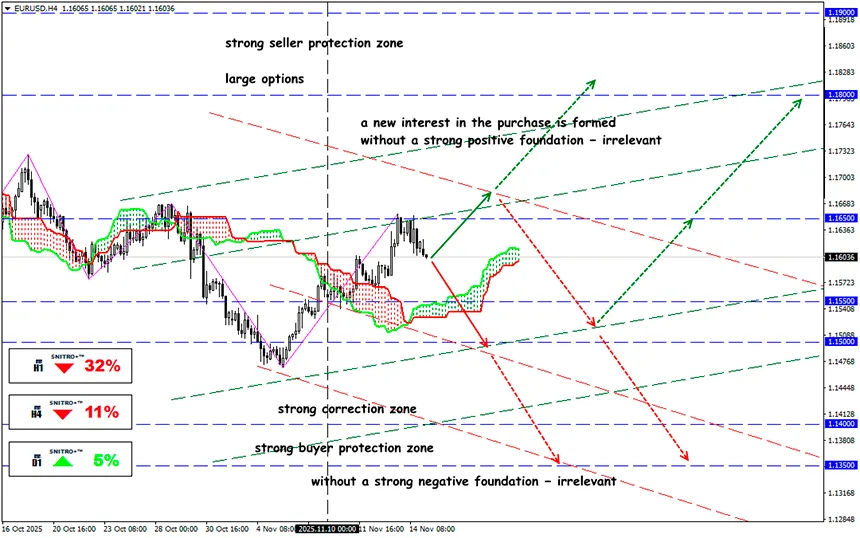How to Live Without the Dollar: Modeling a Crisis

EUR/USD
Key zone: 1.1550 - 1.1650
Buy: 1.1650 (on strong positive fundamentals) ; target 1.1800-1.1850; StopLoss 1.1580
Sell: 1.1550 (on a pullback after retesting the 1.1600 level) ; target 1.1350; StopLoss 1.1620
DWS, the largest asset-management company in Europe, warns of global risks if the U.S.—more precisely, the Federal Reserve—restricts access to dollar liquidity. Any move in this direction would have serious consequences, especially for emerging markets that rely heavily on dollar funding.
At an ECB-hosted conference, Jerome Powell pledged not to change the rules for providing dollar liquidity to foreign official institutions. But European financial regulators have long condemned the dominance of the Fed’s liquidity-support mechanisms. Their new initiative aims to pool dollar reserves held by non-US central banks to reduce dependence on the U.S. Trump’s second term accelerated this effort.
A complete “ban” on the dollar is unlikely, but selectively or temporarily restricting liquidity flows through sanctions, regulation, or settlement access is entirely possible. For example:
Sanctions and restrictions on USD settlements
- blocking banks via OFAC lists;
- prohibition of transactions through correspondent accounts at U.S. banks;
- limits on clearing USD payments (CHIPS, Fedwire).
Restrictions or increased cost of dollar funding
- tougher access to USD credit lines for foreign banks;
- changes to the terms or volume of the Fed’s swap lines with the ECB, Bank of England, and Bank of Japan.
Regulatory or other “legal weapons”
- secondary sanctions against those who help bypass restrictions;
- pressure on global financial infrastructure (clearing houses, depositories).
Even a partial implementation of any item on this list is a huge systemic risk.
As of today, the dollar accounts for:
- 58% of global FX reserves;
- 88% of all FX transactions (USD appears in nearly every second currency pair).
Nearly all global credit, trade finance, and derivatives markets depend on USD. BIS data shows that dollar liabilities hidden in FX swaps and forwards (off-balance sheet) are enormous and opaque — trillions of “invisible” dollar debt.
Meanwhile, major currencies such as the euro, yen, and pound are integral to global finance, but most international loans, bonds, and derivatives in those currencies are still hedged through USD.
If you’re not ready to “escape” into gold or equities, you must look for cross-currency strategies that avoid USD:
- EUR/JPY – the main Europe–Asia cross;
- EUR/GBP – balance of EU/UK financial centers;
- GBP/JPY – a combination of risk sentiment (GBP) and safe-haven flows (JPY).
In a de-dollarization scenario, liquidity and importance of these pairs rise structurally. Their fundamentals are transparent, and they can be traded using standard technical methods (mean reversion, breakout, volatility setups, etc.).
We will discuss tactics for navigating restricted USD liquidity in a separate article. For now, the market is still overloaded with dollars, and retail traders can speculate without obstacles. But it’s time to start thinking about protection from the dollar.
So we act wisely and avoid unnecessary risks.
Profits to y’all!

















